Krakow's Renaissance Architecture,
Nazi Oppression and Communist Planning
![]()
In the south of Poland, Wawel Castle sits on a hill high above the Visla river surrounded by the energetic, culturally rich, and fun city of Krakow. We traveled by train from Warsaw, appreciating the green farmlands and, farther south, the more hilly and geologically interesting foothills of the Carpathian mountains.
Arriving in Krakow, we headed straight to the vast Rynek Glowny, the city's market square and the largest in Europe. Here, we discovered that on every side of the square, the Renaissance architecture seemed to have a more authentic, organic feel than the reconstructed squares of Gdansk and Warsaw. Was this our imagination?
Well, no! In fact Krakow had escaped the destruction suffered by other Polish cities during World War II. In the centre of the square, the Sukiennice, the Cloth Hall, with its gothic arches, spires, and masks dominates the scene. This monument to Krakow's historic stature as a leading city of trade, still serves as a market, but now selling local crafts and souvenirs.
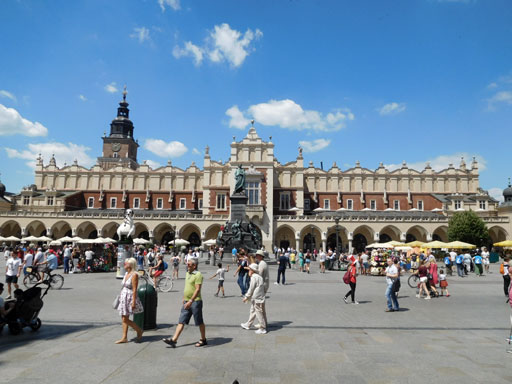
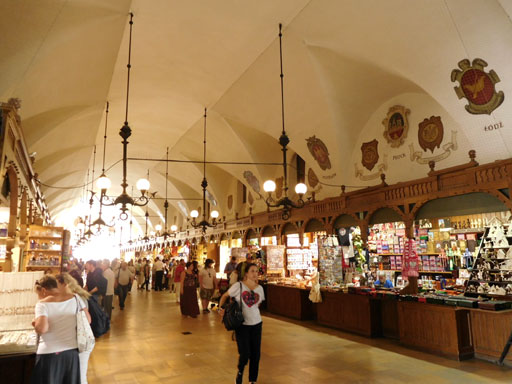
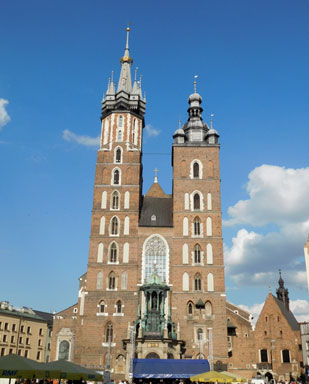
Nearby stands a grand clock tower, all that remains of the former town hall. Another architectural wonder is the cathedral with its two towers, each one different (picture at right).
We planned a return to explore more but first, we needed dinner! No problem! Nearly every building around the massive square had a cafe, bar, or restaurant on the ground floor!
In the days that followed, we walked or rode trams and buses to visit the many landmarks of this lovely city. When we tired of visiting churches and the Wawel Castle, we strolled under the shady trees of the Planty Gardens, the ring of greenspace that surrounds the old city, or explored the Botanical Garden.
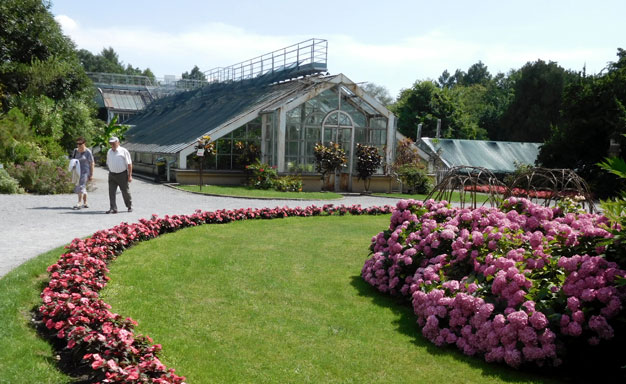
Pictures of many of the places mentioned in this story are included in our Flickr picture album.
Click here to view it.
Even though Krakow escaped destruction during WWII, it did not escape the suffering! The Nazi occupation began in 1939 following the German invasion and continued until the Russian Army arrived in 1945. During the occupation, the Germans practiced cultural destruction and created a Ghetto for the Jewish population. This became a staging area for the deportation of thousands of people to the death camps in the area. In addition to Jewish people, the intellectual community of Krakow suffered a similar fate. Krakow's war experiences are documented in grim detail at the Schindler Museum now housed in the administration building of the factory depicted in the movie 'Schindler's List'.
Following the war, the Polish Communist government decided to build a massive steel plant, the largest in the country. As part of this project the communist planners designed a master planned community adjacent to the plant to house the workers. In retrospect, we wondered why they picked this location as the sources of needed coal and iron ore were far away, and the massive pollution from the steel mill would pose a constant health hazard.
This community, named Nova Huta is a good example of a communist era post war "new town". As we explored, we discovered that the master plan has stood the test of time quite well. The socialist realist architecture with Baroque embellishments, large central plaza with wide roads radiating outward, excellent public transit connections, large green parks, schools, and comfortable residential tower blocks, many with shops on the ground floor, created a pleasant place to live. In fact we learned that many of people living there today are either original residents or descendents of original residents. The steel mill is still in operation, but has been modified to minimize the air pollution and provides employment for some of the residents.
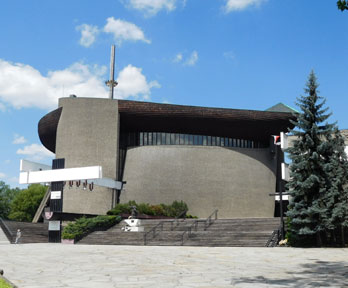 The original master plan did not include a church so residents soon erected a cross and gathered around it for worship. After a while, the authorities agreed to approve a church after all and the resulting modernist building remains a monument to the faith and determination of the Polish workers.
The original master plan did not include a church so residents soon erected a cross and gathered around it for worship. After a while, the authorities agreed to approve a church after all and the resulting modernist building remains a monument to the faith and determination of the Polish workers.
During the 1980s, a branch of Solidarity was formed and engaged in antigovernment actions until the regime change in 1989. Today, Nova Huta is a pleasant suburb of Krakow and well worth a visit!
Our visit to Krakow coincided with World Youth Day. For us, this was unplanned but offered us another perspective on real life! Over 3 million young people poured into the city in the final days of our visit. As these crowds assembled, we joined them to observe the festivities which culminated with a visit by the Pope. This faith based event proved to us that many young people find comfort in Christianity and had gathered here to demonstrate their faith. This was a revelation to us!
If you didn't view our Flickr picture album of the places mentioned in this story, you have another chance: Click here
So, as we headed to our next stop, back to Brussels, we realized that our tour of Poland had deepened our understanding of this fascinating country and taught us more about today's world as well!
Click here to return to our 'Summer 2016 - Back to Europe' page
Click here to return to our 'Searching the World for People Friendly Cities' page
![]()